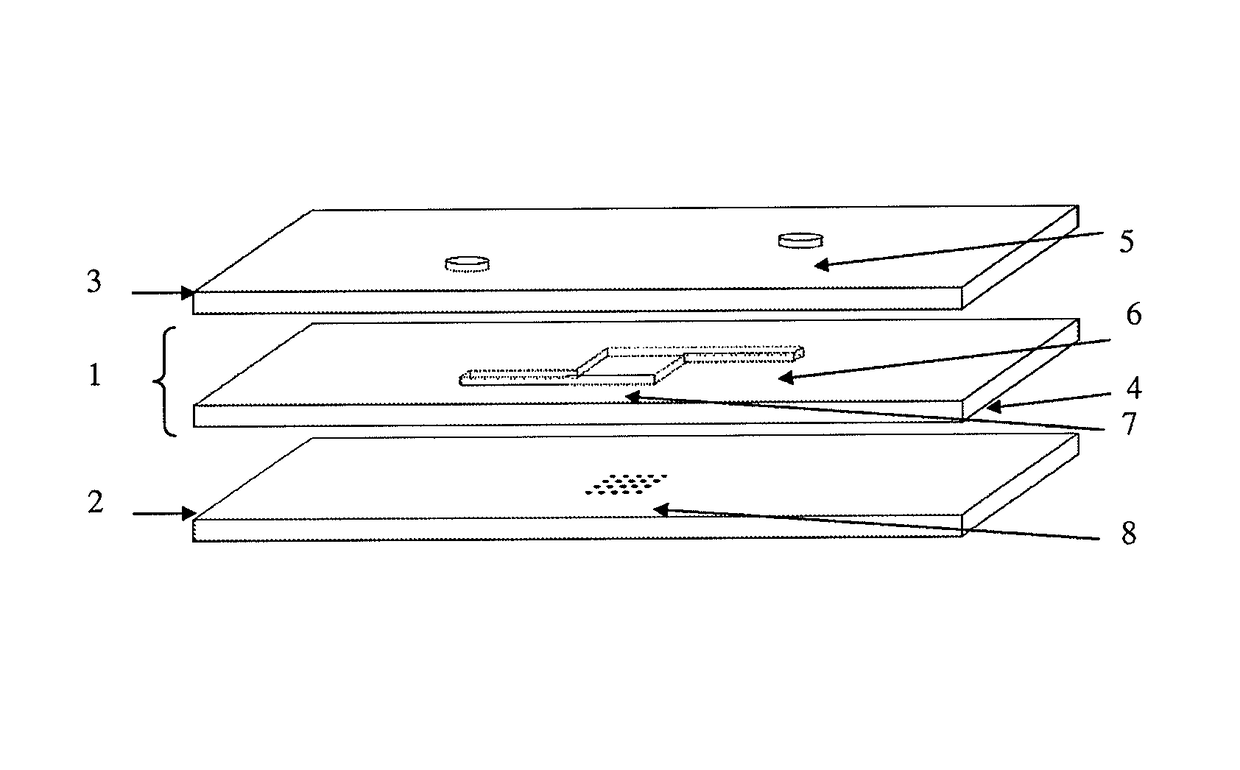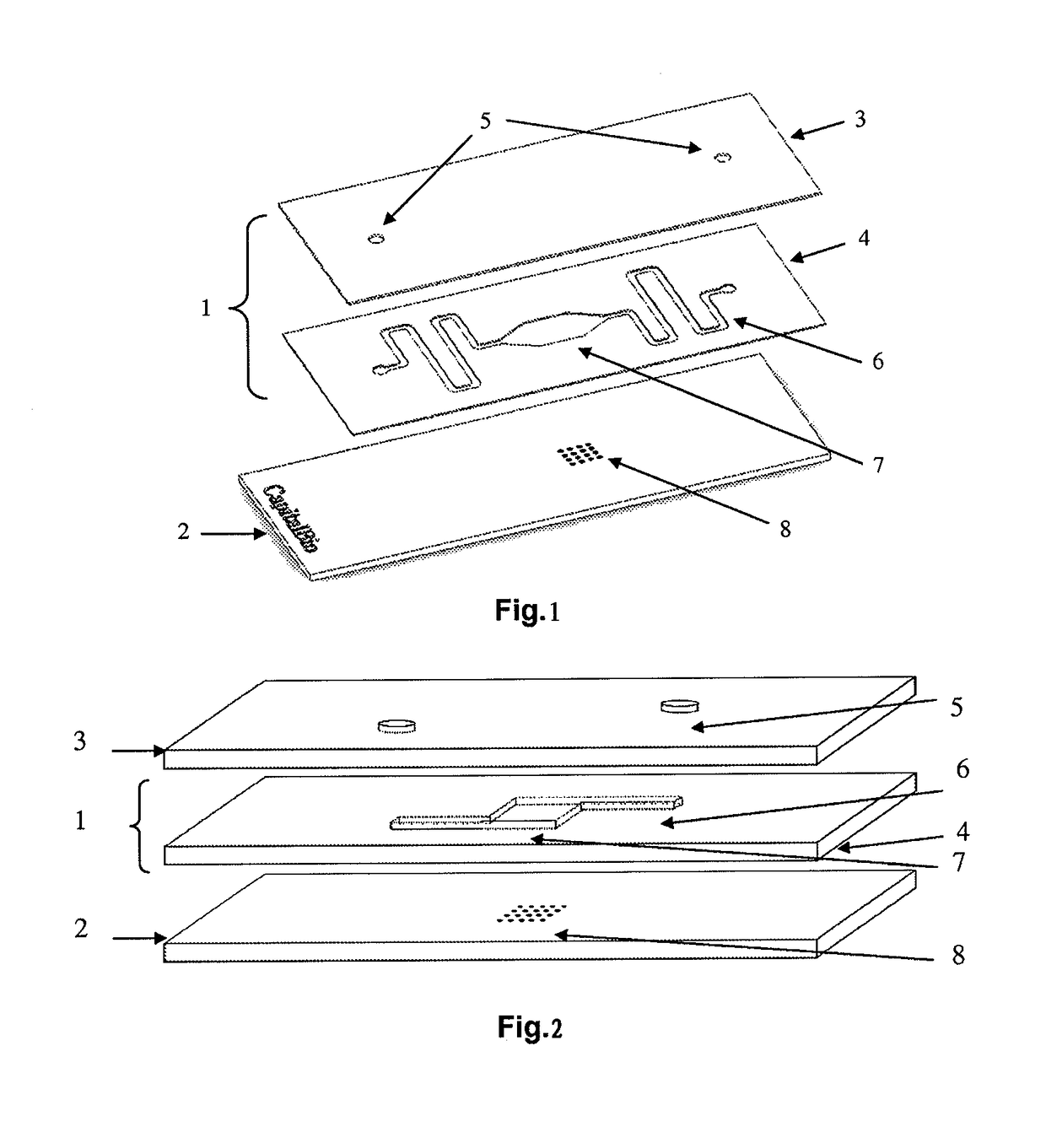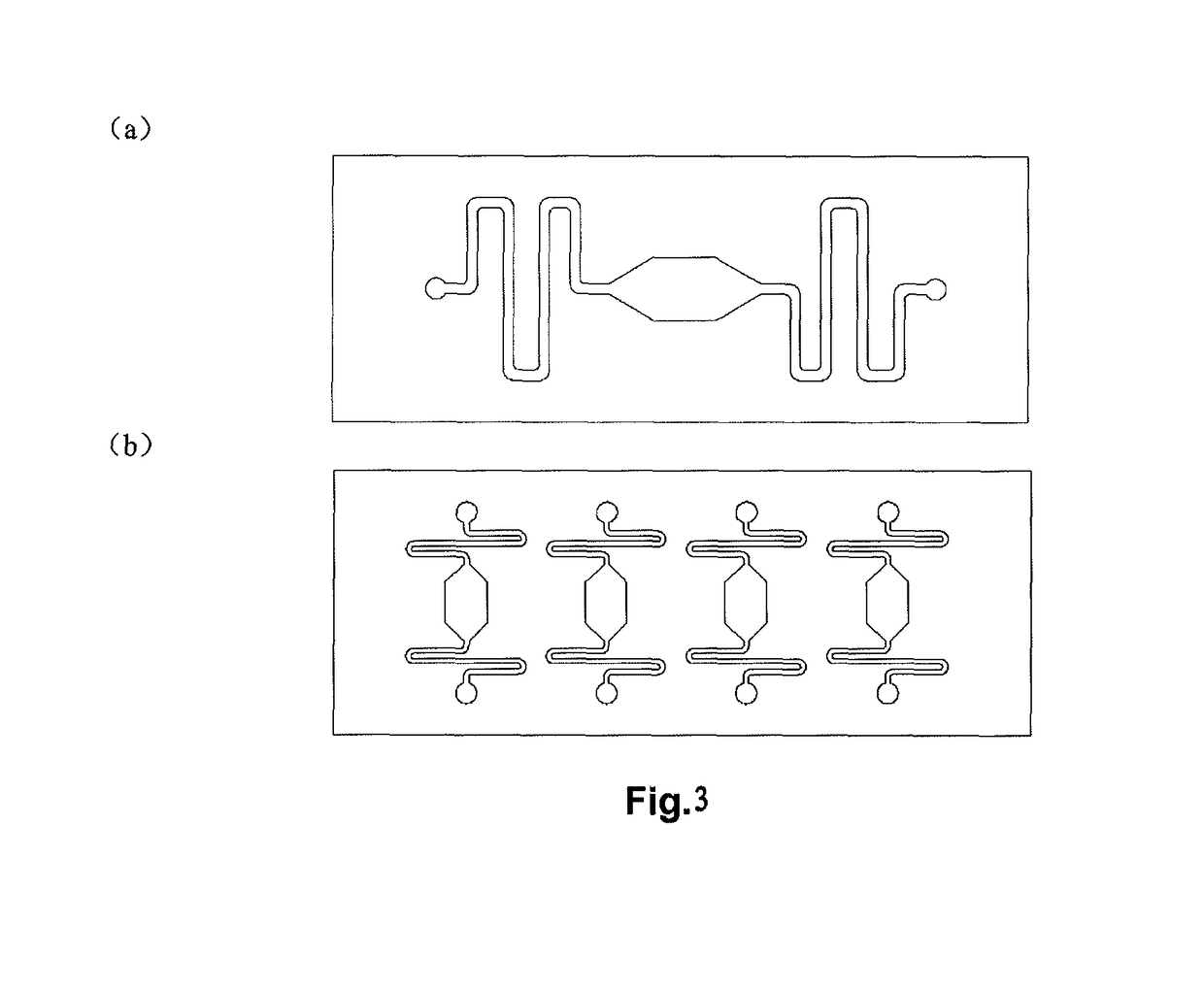Automatic injection device for microarray chip and automatic injection hybridization microarray chip
a microarray chip and automatic injection technology, applied in the biotechnology field, can solve the problems of limiting the use of microarray chips, not being largely used or popularized, and wasting time, so as to shorten the hybridization time, improve the hybridization efficiency, and improve the effect of efficiency
- Summary
- Abstract
- Description
- Claims
- Application Information
AI Technical Summary
Benefits of technology
Problems solved by technology
Method used
Image
Examples
example 1
An Automatic Sample Loading Device and an Automatic Sample Loading Hybridization Microarray Chip Containing One Sample Loading Unit
[0033]The three-dimensional structure of the automatic sample loading device containing one sample loading unit can be seen in FIG. 1, wherein 1 is the automatic sample loading device; 2 is the microarray chip, which is a glass based DNA chip or protein chip, with the size of 25×75 mm; 3 is the hydrophilic glass cover plate, after chemical modification, the lower surface of the glass cover plate, i.e., the surface contacting the microfluid layer 4, has a static contact angle of 12 degrees with water, while the upper surface has a static contact angle of 40 degrees with water; and through hole 5 is placed on the cover plate 3 for the solution to pass through; The thickness of the microfluid layer 4 is about 0.2 mm, the substrate of the microfluid layer is polyethylene terephthalate (PET), with both lower and upper surface homogenously coated by acrylic ad...
example 2
An Automatic Sample Loading Device and an Automatic Sample Loading Hybridization Microarray Chip Containing One Sample Loading Unit
[0034]As shown in FIG. 2, the automatic sample loading device 1 containing one sample loading unit is formed by the hydrophilic cover layer 3 and the microfluid layer 4 through sealing, wherein after chemical modification, the lower surface of glass cover plate 3, i.e., the surface contacting the microfluid layer 4, has a static contact angle of 15 degrees with water, while the upper surface, after hydrophobic treatment, has a static contact angle of 1.00 degrees with water, and a through hole 5 is disposed on the cover layer 3 for the solution to pass through. The thickness of the microfluid layer 4 is about 0.2 mm, the substrate of the microfluid layer is polyethylene terephthalate (PET), with both lower and upper surface homogenously coated by acrylic adhesive, and a hollow microfluid channel 6 and hybridization chamber 7 are disposed on the microflui...
example 3
The Automatic Sample Loading Device Containing a Plurality of Sample Loading Units
[0035]FIG. 3(b) is the schematic diagram showing an automatic sample loading device containing 4 sample loading units. The material used for the cover plate is polymethylmethacrylate (PMMA), the lower surface of the cover plate has a static contact angle of 6 degrees with water after modified by polyvinyl alcohol (PVA), while the upper surface with no modification has a static contact angle of 78 degrees with water; the material for the microfluid layer is silicon wafer.
[0036]In contrast to Example 1 and 2, the size for the cover layer and the microfluid layer is large, so that 4 sample loading units are disposed side by side; the microfluid layer of the automatic sample loading device is sealed with 4 microarray chips by adhesive, to form a plate structure with microfluid channels inside, wherein the microfluid channels in each sample loading unit are not connected with each other, while a hybridizati...
PUM
| Property | Measurement | Unit |
|---|---|---|
| contact angle | aaaaa | aaaaa |
| contact angle | aaaaa | aaaaa |
| reciprocating frequency | aaaaa | aaaaa |
Abstract
Description
Claims
Application Information
 Login to View More
Login to View More - R&D
- Intellectual Property
- Life Sciences
- Materials
- Tech Scout
- Unparalleled Data Quality
- Higher Quality Content
- 60% Fewer Hallucinations
Browse by: Latest US Patents, China's latest patents, Technical Efficacy Thesaurus, Application Domain, Technology Topic, Popular Technical Reports.
© 2025 PatSnap. All rights reserved.Legal|Privacy policy|Modern Slavery Act Transparency Statement|Sitemap|About US| Contact US: help@patsnap.com



